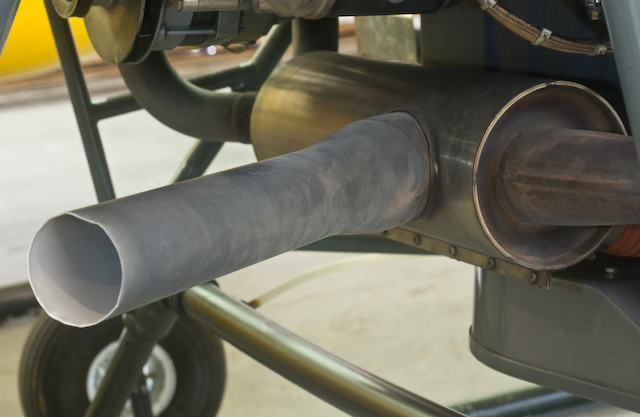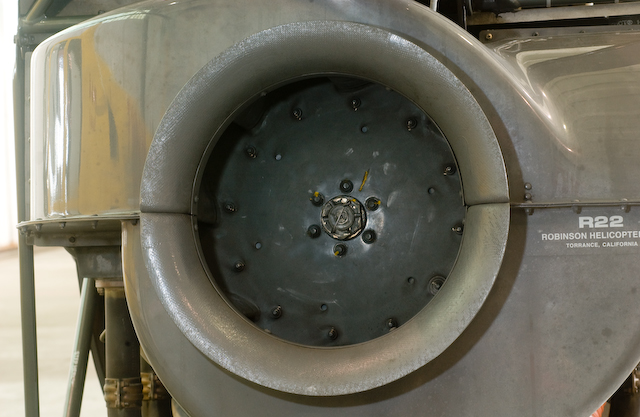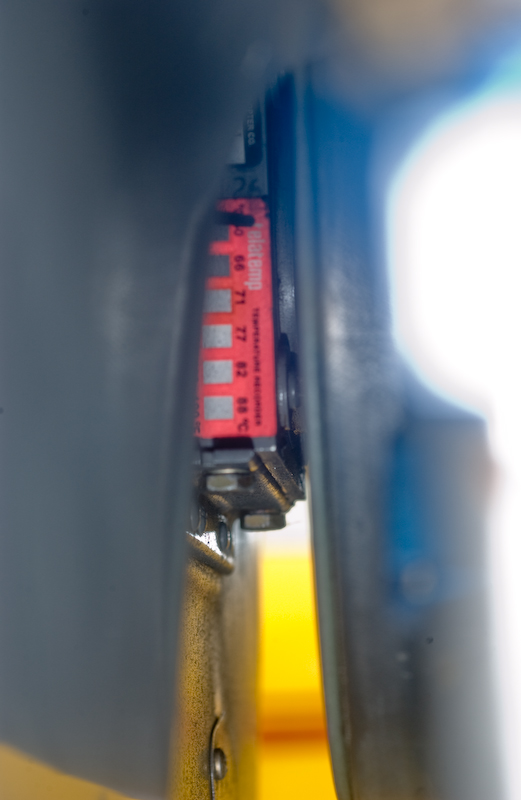


The shaft we are looking at here is where the propeller would mount when the engine is installed in an airplane. The shaft is not keyed, i.e. there is nothing to prevent the fan from spinning on the shaft except for the tension of the big nut. If the nut was to back off some, the fan could slip on the shaft. To be able to tell that this is not happening, the mechanic should put a paint mark of some kind (in this case it is yellow torque stripe) on the fan aligned with the pin and safety wire. If the pin and the paint are not lined up, this would be an indication that the fan has slipped. You should make sure that the pin and the safety wire are present, and lined up with the paint line.
The areas of the metal squirrel cage fan to check are around the center nut/shaft, around each of the nuts/bolts that surround the shaft, each of the nuts/bots out near the fan blades, and the welds of the blades themselves.

The fiberglass fan scroll should be examined for cracks. It is common to see small surface crazing in the surface, but I think you should only be concerned with deep cracks that seem to extend all the way through the material.

You can refer to a previous discussion of teletemps with respect to the main transmission. In this picture, you can see that two of the squares have turned black, indicating that the temperature has peaked at just below 71 degrees C. This is probably a normal operating temperature for this part. The pilot should keep track of which boxes were black. If on a subsequent preflight you suddenly notice that a couple more boxes have turned black, that is an indication that the part is suddenly running hotter, and you would want to look into why this is occurring.
I find the lower bearing a difficult part to describe a preflight procedure. Early on, the R22 experienced lots of lower bearing problems, but the word at the time was that the bearing would start to push grease well before it would fail. Robinson changed the design of the lower bearing, and the word was that the pushing of grease was no longer a reliable indicator.
At the factory school, they warn you that the teletemp won't start to turn dark until the part is already into failure, so it is not a reliable indication that the part will not fail during the next flight. Some people (Frank included) will tell you to open the pilot door and listen to the noise it makes so that you will be aware of a different sound that the bearing may make before failure. Other people at the factory will tell you that you won't hear a difference unless you are standing right next to the part. Most of us operate in a single pilot mode where we can't be starting the helicopter and standing next to the bearing at the same time.
Personally, I just check that the teletemp looks normal, and that I'm not seeing an excessive amount of grease coming off the bearing.